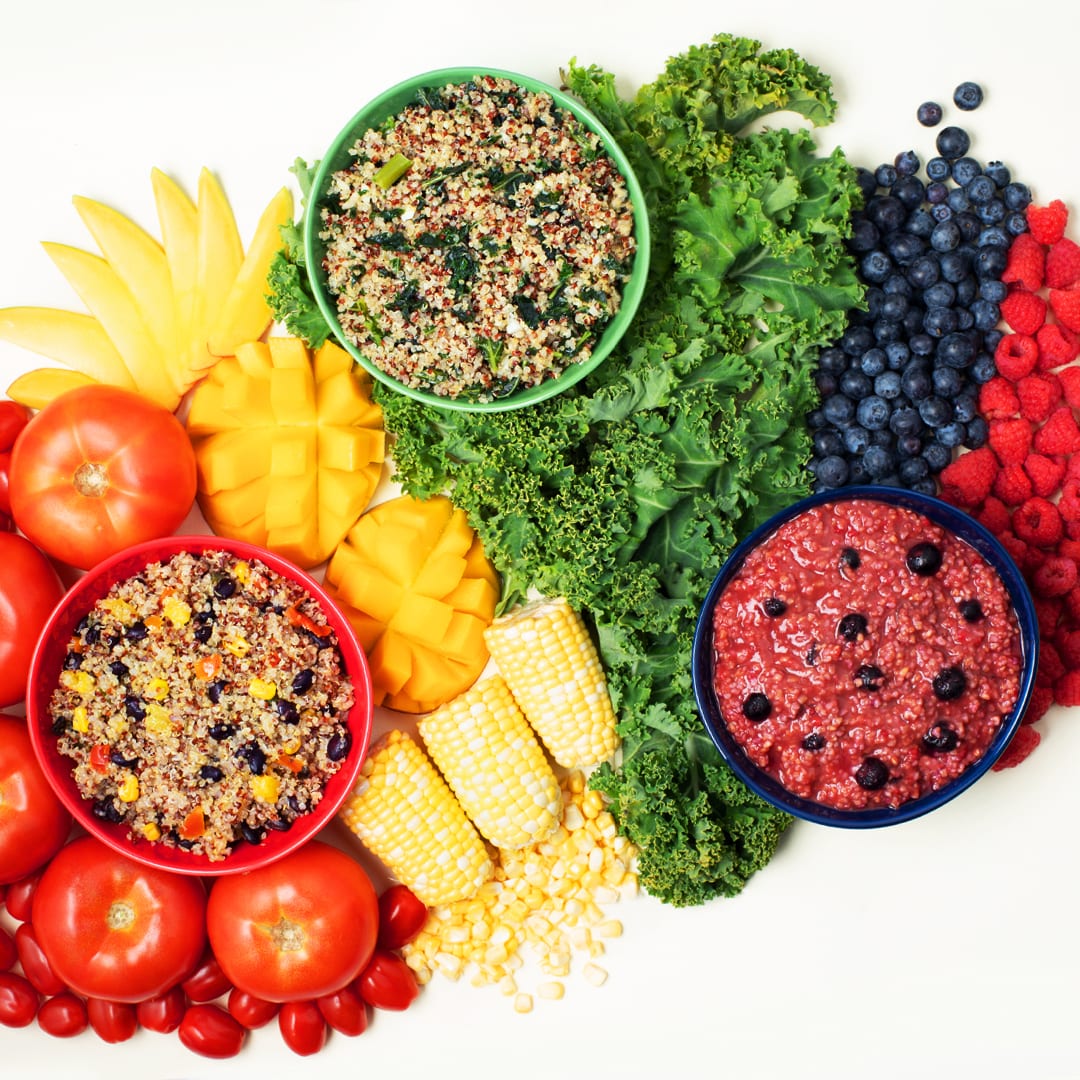Eating the Rainbow is Easier Than You Think

If you’ve ever been told to “eat the rainbow,” here’s how to keep it simple.
Written by Leah Johnston, RDN, LDN
The next time you sit down for a meal, pause and take a moment to look at the colors featured on your plate or in your bowl. Are there a variety of colors represented or is it just one or two?
The concept of “eating the rainbow” simply means consuming a variety of colorful foods throughout the day. Doing so establishes a nutrient-dense eating pattern with a wide range of health benefits. The visual appeal of a colorful plate makes mealtime more enticing and exciting for adults and children alike. A plate or bowl full of colors truly enhances the eating experience. There’s a reason that we are easily enthralled by the beautiful food photography that pops up on our Instagram feeds! It’s attractive. It’s delicious. And it’s packed full of the stuff our bodies need.
You may look at those beautiful Instagram photos and think – there’s no way I have time to make that dish! As a registered dietitian, I can assure you that there are easy ways to make your meals more colorful without spending too much time prepping and cooking.
RD TIP: Head to the freezer section and grab fruits and veggies that are already chopped and pre-cooked. Better yet, grab a few bags of Path of Life that are not only colorful, but flavorful to boot. With a variety of veggie and grain options to choose from, Path of Life’s frozen blends contain all the colors of the rainbow and can serve as the foundation for a complete meal with a few additions or a meal by itself! Here are some of the fruits and veggies featured in the Path of Life blends:
RED – Tomatoes
Juicy, red tomatoes are full of nutrients including vitamins C and K, folate and potassium. The phytonutrient lycopene is abundant in tomatoes giving them their red hue. Lycopene has antioxidant properties that have been linked to many health benefits. Cooking tomatoes actually increases the amount of lycopene that the body can absorb.
ORANGE – Mango
Mangoes are one of the best sources of vitamin C with nearly 70% of the recommended daily intake (RDI) in one cup. Not to mention the vitamin A, B6, folate, and copper that mangoes provide.
YELLOW – Corn
Lutein and zeaxanthin are two carotenoids that can be obtained from sweet corn. Both nutrients have been linked to eye health and the prevention of the onset of age-related eye diseases. They may also protect the eye against blue light damage.
GREEN – Kale
Green leafy vegetables are some of the most nutrient-dense foods on the planet. Kale is packed with B vitamins, vitamins A, K, C, and minerals like folate and calcium to name a few. This veggie also includes the flavonoids quercetin and kaempferol, which provide antioxidant benefits to protect against cell damage.
BLUE – Blueberries
Speaking of antioxidants, blueberries have one of the best antioxidant profiles of all fruits and vegetables. They contain a flavonoid known as anthocyanins, which give the berries it’s deep bluish purple coloring. Antioxidants may help to prevent cancer, dementia, and Alzheimer’s disease by protecting DNA from free radical damage. More research is still needed in these areas.
PINK (ish) – Raspberries
The pinkish-red raspberries are just one of the many color variations of raspberries. They are low in calories, and high in fiber; one cup of red raspberries contains about eight grams of fiber! Raspberries offer over half of the RDI for vitamin C as well as vitamins K and E. They even contain a little iron and magnesium.
Consuming a range of colorful fruits and vegetables has undeniable health benefits. Path of Life Blends are making it easier than ever to “eat the rainbow.”

Leah Johnston is a Chicago-based Registered Dietitian with experience in a variety of settings, including nutrition counseling, clinical research, public speaking, and culinary nutrition. Leah’s goal is to empower people to take control of their health and personalize their diet by being REAL: Eat real food. Make it real easy on yourself. Knowledge-based on real science. Changes that are realistic.